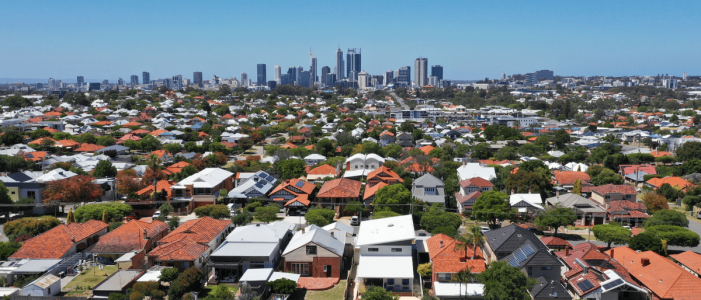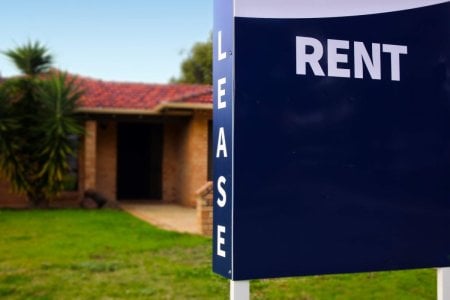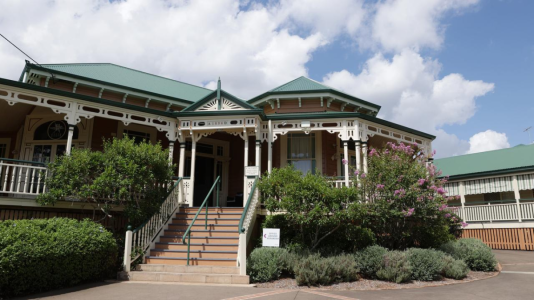Abandoned retirement village to be converted into social housing
- Replies 45
We all know the housing crisis is a major issue, and now the Queensland government is taking action to help.
The long-vacant Maland Rese retirement village in Clayfield, Brisbane will soon be transformed into social housing in an effort to ease the growing pressure with tens of thousands of Queenslanders on the social housing register.
The Queensland government purchased the empty complex for $9.4 million and has already begun the process of getting the 30 dwellings ready for people to move in.
Housing Minister Leeanne Enoch said she was proud of the project, which she believes is a sign of innovation from the Palaszczuk government.
‘This is a critical part of our solution to ensuring that we have more social homes in our stock going forward,’ she said.
‘It was called upon us to be more innovative in the way that we purchase properties and the way that we build properties, and this is a great example of that.’
However, there are concerns surrounding the timeframe of such projects. In response, Ms Enoch had this to say: 'There is a bit of work to be done, of course, [it is an] older building. Some of the self-contained rooms were built back in the ‘80s,' she said.
'We’ve got our team on that already.' she continued.
The Clayfield retirement village is just the latest project announced by the Queensland government. Previously, they revealed plans to convert unused student accommodation at Griffith University’s Mount Gravatt campus into emergency housing. Though four months have now passed, with few updates.
On Sunday, the Housing Minister declined to provide a time frame on when the accommodation may be ready for use.
‘As you might appreciate, it was quite old student accommodation with some shared amenities.’ she explained.
‘We want to get it into a position where it can be utilised in a safe way to house people, and to get the right support around them.’
The state opposition believes that whilst both of these initiatives are a step in the right direction, the government is taking too long to actually implement them.
‘To have another announcement of something that could happen in the future, after half a dozen announcements 100 days ago that still haven't delivered a roof, imagine how you feel being a Queenslander living out of a car knowing that,’ Opposition Leader David Crisafulli said.
‘All we're seeing is a generation of working Queenslanders unable to live in a home and the most vulnerable falling further through the cracks. Neither of those are acceptable in a modern Queensland.’
More than 40,000 people are currently estimated to be on the social housing register, and Opposition Leader David Crisafulli says the government is moving too slowly to help them.
'Good governments set timelines so they can be held accountable. Every time you make an announcement and you don't actually deliver anything, it breaks the heart of someone who doesn't have a roof over their head,' he said.

Ms Enoch said the Palaszczuk government had delivered more than 4,000 new social homes to date and was looking at 'every available, workable option' to help Queenslanders in need.
The announcement of the new social housing project in Brisbane’s north highlights the extensive need for such projects. Over the past year, in particular, the country has witnessed a significant decrease in rental affordability. Low-income earners have been hardest hit, struggling to secure housing amidst record-low vacancy rates.
A growing housing affordability crisis, rising house prices, and overcrowded rental markets in most parts of the country have pushed the need for public housing to a boiling point. The struggle for rental affordability is illustrative of the profound need to re-evaluate Australia’s housing policies and programs.
So watch this space as we await further news for both projects. Hopefully, this will inspire other states and territories to take innovative approaches to the housing crisis.
If you have any tips on services or support available for those in need of social housing, then please consider sharing them in the comments below. If you are interested in applying for social housing, you can do so through your state/territory government. We’ve listed them below for your convenience.
New South Wales
Victoria
Queensland
Western Australia
South Australia
Tasmania
Northern Territory
Australian Capital Territory
The long-vacant Maland Rese retirement village in Clayfield, Brisbane will soon be transformed into social housing in an effort to ease the growing pressure with tens of thousands of Queenslanders on the social housing register.
The Queensland government purchased the empty complex for $9.4 million and has already begun the process of getting the 30 dwellings ready for people to move in.
Housing Minister Leeanne Enoch said she was proud of the project, which she believes is a sign of innovation from the Palaszczuk government.
‘This is a critical part of our solution to ensuring that we have more social homes in our stock going forward,’ she said.
‘It was called upon us to be more innovative in the way that we purchase properties and the way that we build properties, and this is a great example of that.’
However, there are concerns surrounding the timeframe of such projects. In response, Ms Enoch had this to say: 'There is a bit of work to be done, of course, [it is an] older building. Some of the self-contained rooms were built back in the ‘80s,' she said.
'We’ve got our team on that already.' she continued.
The Clayfield retirement village is just the latest project announced by the Queensland government. Previously, they revealed plans to convert unused student accommodation at Griffith University’s Mount Gravatt campus into emergency housing. Though four months have now passed, with few updates.
On Sunday, the Housing Minister declined to provide a time frame on when the accommodation may be ready for use.
‘As you might appreciate, it was quite old student accommodation with some shared amenities.’ she explained.
‘We want to get it into a position where it can be utilised in a safe way to house people, and to get the right support around them.’
The state opposition believes that whilst both of these initiatives are a step in the right direction, the government is taking too long to actually implement them.
‘To have another announcement of something that could happen in the future, after half a dozen announcements 100 days ago that still haven't delivered a roof, imagine how you feel being a Queenslander living out of a car knowing that,’ Opposition Leader David Crisafulli said.
‘All we're seeing is a generation of working Queenslanders unable to live in a home and the most vulnerable falling further through the cracks. Neither of those are acceptable in a modern Queensland.’
More than 40,000 people are currently estimated to be on the social housing register, and Opposition Leader David Crisafulli says the government is moving too slowly to help them.
'Good governments set timelines so they can be held accountable. Every time you make an announcement and you don't actually deliver anything, it breaks the heart of someone who doesn't have a roof over their head,' he said.
Key Takeaways
- The Queensland government will convert an old abandoned retirement village in Clayfield into social housing.
- The government purchased the vacant complex for $9.4 million and has begun getting the dwellings ready for people to move in.
- Opposition Leader David Crisafulli called on the government to give an indication of when the dwellings will be ready for use.
- The Palaszczuk government has already delivered over 4,000 new social homes and is looking at ‘every available, workable option’ to bolster housing availability for Queenslanders.
Ms Enoch said the Palaszczuk government had delivered more than 4,000 new social homes to date and was looking at 'every available, workable option' to help Queenslanders in need.
The announcement of the new social housing project in Brisbane’s north highlights the extensive need for such projects. Over the past year, in particular, the country has witnessed a significant decrease in rental affordability. Low-income earners have been hardest hit, struggling to secure housing amidst record-low vacancy rates.
A growing housing affordability crisis, rising house prices, and overcrowded rental markets in most parts of the country have pushed the need for public housing to a boiling point. The struggle for rental affordability is illustrative of the profound need to re-evaluate Australia’s housing policies and programs.
So watch this space as we await further news for both projects. Hopefully, this will inspire other states and territories to take innovative approaches to the housing crisis.
If you have any tips on services or support available for those in need of social housing, then please consider sharing them in the comments below. If you are interested in applying for social housing, you can do so through your state/territory government. We’ve listed them below for your convenience.
New South Wales
Victoria
Queensland
Western Australia
South Australia
Tasmania
Northern Territory
Australian Capital Territory










